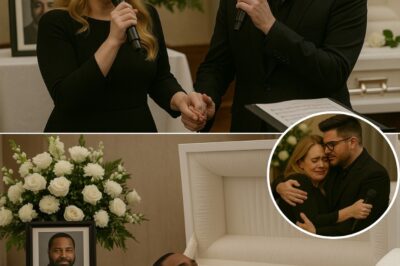In the quiet town of Glenn Ellen, Illinois, a tragic mystery began one summer afternoon in 1985 that would remain unsolved for decades.
Fifteen-year-old Christy Wesselman, a bright and popular high school student, left her home for a simple errand — a quick walk to a nearby store just minutes away to buy a soda and chocolate bars for herself and her mother.

What should have been a routine trip turned into a nightmare when Christy never returned.
Her disappearance sent shockwaves through the community and launched a police investigation that would span over thirty years.
Christy was born on April 19th, 1970, in Glenn Ellen, where she lived with her mother, two older brothers, and a sister.
The town was known as one of the safest in the area, and Christy loved spending time outdoors, often wandering the neighborhood streets with friends.
At school, she was well-liked, actively involved in student life, and even elected vice president of her class.
She played volleyball and softball, embodying the typical vibrant teenager full of promise.
On July 21st, 1985, Christy returned home from summer classes around 3:30 p.m.
Shortly after, she decided to walk to a local store to pick up some snacks — a soda and chocolate bars — a quick errand her mother expected her to complete in just a few minutes.
But as time passed, Christy did not come back.
At first, her mother thought she might have run into friends or gotten distracted, but soon worry set in.

Without cell phones in those days, there was no way to contact Christy directly.
Her mother called Christy’s friends, but none had seen her that day.
Desperately, she went to the store herself, scanning the streets, but there was no sign of her daughter.
Hours passed and by nearly 2 a.m., the police were contacted.
Officers began piecing together Christy’s last known movements, speaking to witnesses including the store clerk who knew Christy well.
He confirmed she had come by around 4 p.m., purchased chocolate bars, and left happily, showing no signs of distress.
Other witnesses had also seen Christy at the store but none recalled where she went afterward.
The police interviewed all of Christy’s friends, considering the possibility she had lost track of time, but no one had seen her after the store visit.
The search intensified, with officers combing the streets well into the night, but no clues emerged.
The following day, a new lead surfaced — a detective suggested retracing Christy’s likely route from her house to the store.
Locals often took a shortcut through a large vacant field with tall grass, a path worn narrow by frequent use.

As the detective followed the trail, he made a grim discovery — Christy’s body, hidden just a few yards off the path in the overgrown grass.
The scene was hauntingly silent, with no footprints, no belongings, and no immediate evidence to explain what had happened.
Medical examiners determined Christy had died from eight stab wounds and found biological material indicating sexual assault.
However, in 1985, DNA testing was in its infancy and not widely used, so the biological evidence was preserved but could not be analyzed at the time.
One poignant detail emerged — Christy had been wearing a pearl ring that day, but it was missing from the crime scene, leading investigators to believe the killer had taken it.
Police monitored local pawn shops in case the ring surfaced but with no immediate leads, the case grew cold.
Despite numerous people living nearby and even a family hosting a barbecue just yards from the body’s location, no one reported hearing or seeing anything suspicious.
This silence baffled investigators and led them to theorize that Christy might have known her attacker, explaining the absence of screams or struggle noises.
The police investigated men who knew Christy and those with violent criminal records, but none could be linked to the crime.
For three years, the case remained stagnant, with every lead ending in dead ends.
In 1988, as DNA technology advanced, investigators collected samples from all potential suspects, but one man, Dana Henry, refused to provide his DNA.
Henry, a 34-year-old living near the field, had been a person of interest from the beginning.
His refusal led to a court order and his temporary imprisonment for contempt before he reluctantly submitted a sample.
His DNA did not match the evidence, and he was released, but the ordeal ruined his life, costing him his home, relationships, and reputation.
Years later, Henry spoke publicly about the damage he suffered, highlighting the toll of wrongful suspicion.
Meanwhile, the case remained unsolved.
In 1989, a man named Willis began bombarding Christy’s family with unsolicited tips, claiming knowledge of the killer’s identity.
His relentless and often irrelevant claims led to a restraining order, and police investigated him but found no connection to the crime.
The case grew colder with each passing year.
In 2000, the killer’s DNA was entered into the FBI database, but no match was found.

Over the next decade, the case was occasionally revisited but without progress.
Finally, in 2015, a breakthrough came.
The FBI database alerted investigators to a perfect DNA match — Michael Jones, a 62-year-old man from a town 150 miles away.
His DNA had been recently uploaded following his arrest for domestic violence, a result of Illinois law requiring DNA samples from suspects.
Jones’s name had never surfaced during the initial investigation.
His criminal history was extensive, including assaults dating back to the 1970s, yet he had avoided severe consequences early on.
He had served prison time but was released early, before Christy’s murder in 1985.
His early release was unknown to his victims, including Christy’s family, who believed justice had failed them.
Jones’s volatile temper and obsession with crime stories raised suspicions that he might have committed other unsolved crimes.
After confirming the DNA match, police charged Jones with Christy’s murder in 2015.

He denied involvement, but overwhelming evidence led to a guilty plea in 2018, resulting in an 80-year sentence with parole eligibility in 2095.
Christy’s family expressed relief and gratitude for the closure, while also lamenting the failures that allowed Jones to be free when he could have been stopped.
Dana Henry, the man once wrongly accused, attended the trial, hoping justice would bring healing, though scars remained.
This tragic story underscores the importance of advances in forensic science and the perseverance of law enforcement and families seeking truth.
It also serves as a sobering reminder of the profound impact unsolved crimes have on communities and innocent lives caught in their wake.
If this story moved you, please share your thoughts and support efforts to bring justice to victims everywhere.
Together, we honor Christy’s memory and stand against the darkness of unsolved mysteries.
News
“I Lost More Than a Friend” — Adam Sandler Breaks Down Remembering Malcolm-Jamal Warner: ‘He Was My Compass When Fame Got Dark’
Adam Sandler Remembers Malcolm-Jamal Warner from The Cosby Show at Happy Gilmore 2 Premiere Amid Tragic News At the recent premiere of Happy Gilmore…
I Expected Ken Jennings to Shine on Who Wants to Be a Millionaire — But He Blew Me Away When He Outsmarted a Sneaky Lifeline Trap As a trivia legend, I knew Jennings would hold his own, but nothing prepared me for the moment he spotted — and boldly exposed — a hidden trick mid-game. It wasn’t just smart… it was legendary.
When you buy through links on our articles, Future and its syndication partners may earn a commission. Credit: Christopher Willard/Disney…
Justin Bieber’s Hidden Struggle: Panic Attack and Tears Behind the Scenes of the “Yummy” Music Video
Justin Bieber’s Hidden Struggle: Panic Attack and Tears Behind the Scenes of the “Yummy” Music Video Justin Bieber, one of…
Anne Curtis Rejected Justin Bieber: The Untold Story of a Goddess Who Said No!
Anne Curtis Rejected Justin Bieber: The Untold Story of a Goddess Who Said No! In the world of showbiz, stories…
Under a gray Los Angeles sky, mourners gathered at St. Paul’s Chapel to honor Malcolm-Jamal Warner. But when Adele and Adam Lambert stepped forward, grief turned to something transcendent. With trembling hands and tear-filled eyes, they began a haunting duet of “Bridge Over Troubled Water.” Behind them, black-and-white images of Malcolm’s life flickered. Midway, Adam’s voice broke—Adele reached for his hand and whispered, “We’ve got you.” No applause followed, only silence and sobs. As they laid a rose and folded music sheet on his casket, sunlight broke through the stained glass. Later, Adam said, “We sang him home.” It wasn’t a performance—it was a farewell carried on voices that shook the soul.
“We Sang Him Home” — Adele and Adam Lambert’s Heartbreaking Tribute to Malcolm-Jamal Warner Moves a Nation to Tears It…
“Rigged and Rotten!” — Jonathan Hugendubler Drops BOMBSHELL Accusation Against ‘Jeopardy!’ Rival Scott Riccardi: “I Was Set Up to Lose!” Television’s most beloved quiz show is facing a firestorm as Jonathan Hugendubler unleashes a shocking claim: his showdown with Scott Riccardi wasn’t just intense—it was manipulated. “From the moment I walked on set, it felt like a trap,” he revealed in a jaw-dropping interview. Fans are reeling, insiders are whispering, and the show’s integrity may never recover. Is Scott Riccardi’s win about to be erased from history?
Jonathan Hugendubler is set to compete on Jeopardy! against superchamp Scott Riccardi on Friday, July 25, the last episode of the season. The two…
End of content
No more pages to load













